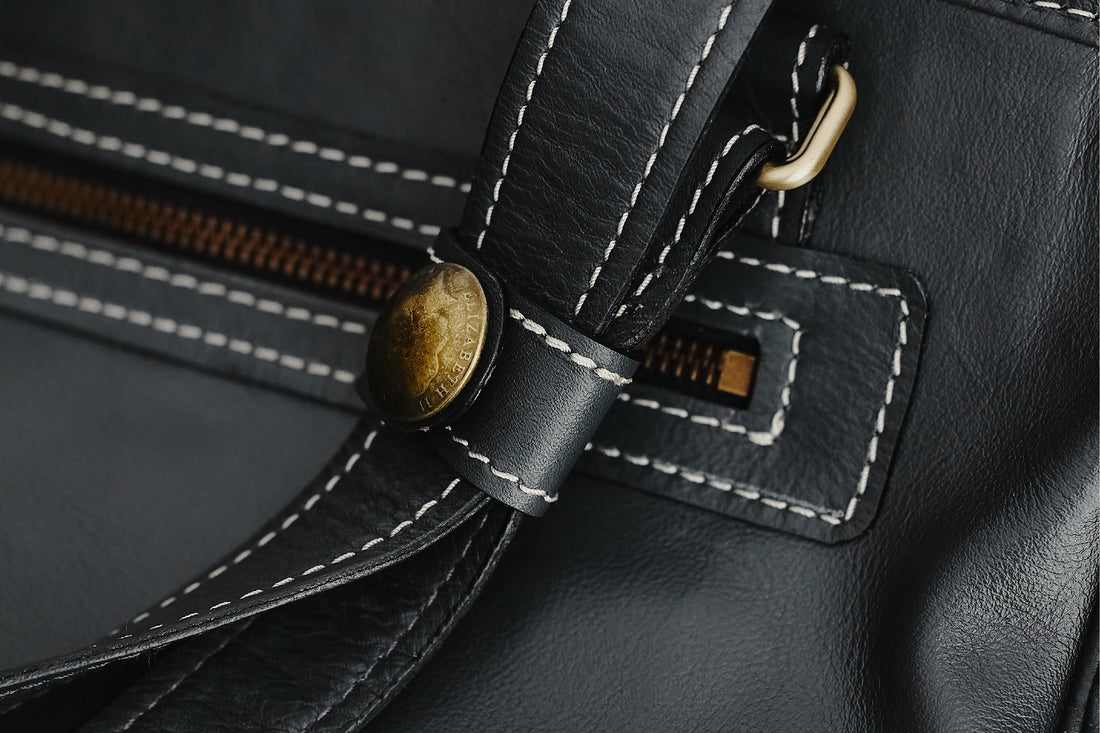
Real Leather or Faux Leather? A Complete Guide to Choosing the Right Material
Share
In the leather product market, genuine leather and synthetic leather are the two most common materials. Though they may appear similar, there are significant differences between the two in terms of texture, durability, environmental impact, price, and more. Understanding these differences is crucial for consumers when selecting the right product, especially when purchasing high-quality genuine leather bags.
- Source and Production Process
Genuine Leather: Genuine leather comes from animal hides, typically cows, sheep, pigs, etc. The production process involves several steps such as tanning, dyeing, and shaping to preserve the leather’s natural texture. These processes are time-consuming and require skilled craftsmanship to maintain the leather's flexibility and durability.
Synthetic Leather: Synthetic leather is a man-made material, typically crafted from plastics such as PVC or PU. It is designed to replicate the appearance and texture of genuine leather. The production process involves bonding a base material with a plastic film, followed by coloring or treatment to create the final product. This process is relatively simple and cost-effective.
- Texture and Appearance
Genuine Leather: Genuine leather has natural grain patterns, making each piece unique and more personalized. The surface may feature natural pores and slight irregularities, reflecting its authenticity. Over time, genuine leather becomes softer and develops a unique "patina," a natural gloss and texture that evolves with use.
Synthetic Leather: Synthetic leather typically has a more uniform surface with consistent grain patterns. While it mimics the look of genuine leather, it lacks the natural variation and depth found in real leather. Even though it may appear similar to genuine leather initially, it won’t develop the same aging effects over time.
- Durability and Maintenance
Genuine Leather: Genuine leather is extremely durable and, with proper care, can last for many years or even a lifetime. It has the advantage of flexibility and can withstand significant stretching and abrasion. As it ages, it forms a distinct patina, enhancing both its beauty and texture. Caring for genuine leather typically involves regular cleaning, conditioning, and using specialized products to maintain its softness and sheen.
Synthetic Leather: Synthetic leather is less durable. While it can withstand basic wear and tear, over time it is more prone to deterioration, such as cracking or peeling. Unlike genuine leather, synthetic leather does not become more durable or attractive with age. It requires minimal maintenance, mainly surface cleaning, but once damaged, repairs are difficult.
- Environmental Impact and Sustainability
Genuine Leather: Although genuine leather is derived from animals, the modern leather-making process has seen many improvements. Many brands now use eco-friendly tanning methods and treat waste and harmful substances. Compared to other materials, genuine leather is more sustainable due to its long lifespan and biodegradable properties.
Synthetic Leather: Synthetic leather has a relatively poor environmental impact as its production generates substantial chemical waste and carbon emissions. While some brands use recyclable materials, most synthetic leathers do not decompose naturally, creating ongoing environmental concerns.
- Price
Genuine Leather: Due to the complex production process and higher raw material costs, genuine leather products are generally more expensive. High-quality genuine leather items, such as leather bags, typically carry a higher market value.
Synthetic Leather: Synthetic leather is much more affordable than genuine leather. Since it is cheaper to produce, synthetic leather products are offered at lower price points, which is one of the reasons for its popularity in the mass market.
- Comfort and Breathability
Genuine Leather: Genuine leather offers excellent breathability, allowing air circulation and preventing discomfort from prolonged skin contact. This makes leather products, such as shoes and bags, more comfortable, even with long-term use, as they are less likely to feel stuffy or uncomfortable.
Synthetic Leather: Synthetic leather has poor breathability. In humid or hot conditions, it can feel suffocating. Wearing synthetic leather items like bags or shoes for extended periods may lead to discomfort or dampness.
Both genuine leather and synthetic leather come with their respective advantages and drawbacks. The choice between the two depends on the consumer’s preferences and needs. When purchasing genuine leather goods, it’s important to carefully assess the quality and select the one that best fits personal style and usage requirements.
Patina Effect: As genuine leather ages, it forms a unique gloss and texture due to natural oxidation and oils from the hands. This process adds to the leather’s charm and serves as a personal mark.
|
Feature |
Genuine Leather |
Synthetic Leather |
|
Material |
Natural animal hide (cowhide, sheepskin, pigskin, etc.) |
Man-made synthetic materials (PVC, PU, etc.) |
|
Appearance |
Natural grain, unique texture |
Uniform appearance, consistent grain |
|
Durability |
With proper care, long-lasting, develops character over time |
May crack or peel over time, not as durable |
|
Price |
Higher cost |
Lower cost |
|
Breathability |
Highly breathable, comfortable |
Poor breathability, can feel stuffy |
